Chapter 4, Part 17
The 19th century in South Asia. It was a period of time in history when the British consolidated their colonial possessions in the Indian subcontinent. What started out as mere trade missions in the early 17th century, became a vast colonial entity called British India, encompassing regions which now make up India, Pakistan, Bangladesh, Sri Lanka, Myanmar (Burma), Singapore and parts of Malaysia. At the easternmost reach of the British governance – where the sprawling Dutch East Indies began – were the Straits Settlements, a collective unit of colonial lands comprising Singapore, Malacca and a small island off the western coast of Peninsular Malaysia called Prince of Wales Island, which is today known as Penang.
The settlements – strategically located at the busy trade route connecting the Spice Islands and China to India, the Middle East and Europe – were established by the British East India Company (EIC) and remained administered from their office in India until the second half of the 19th century following the Sepoy Rebellion. The rebellion brought the demise of the EIC and spurred a reorganization of British colonial administration in India, where control of British India was transferred to the crown in London. As a prominent island at the Strait of Malacca, for centuries Penang had been used as an important landmark for navigation. Frequented by the Ming dynasty admiral, Zheng He, during his multiple voyages across the Indian Ocean, Penang became a regional entrepôt visited by merchants from foreign lands, including China and India.
Before the British set up a settlement on the island, the Minangkabau people – hailing from West Sumatra in modern-day Indonesia – had already settled and flourished there. In 1786, Captain Francis Light, a trader based out of Madras (at that time the seat of the EIC), on behalf of the company leased Penang from the sultan of Kedah. Similar to the strategy applied by the Dutch in Deli, the British gained control of Penang by promising to defend the island should Kedah’s rivals to the north – the Siamese and the Burmese – attack the Malay sultanate. Whenever rivalries between two parties arise, a third party is always ready to reap benefits for itself.
The new British colonial possession was named Prince of Wales Island, and the settlement Francis Light established at the northeastern corner of the island was called George Town, in honor of King George III of Great Britain and Ireland. For Light, Penang also served as a strategic stronghold to counter the growing French influence in what is today Vietnam, as well as to keep the Dutch activities across the strait in check.
As the first British colony in Southeast Asia, Penang grew rapidly thanks to its position as an important port along the lucrative trade route to and from the Indian Ocean. In the early 19th century, the island’s status was raised to presidency – an administrative division of British governance in India – making it equal to places like Bombay and Madras. Penang remained the capital of the Straits Settlements until administrative matters were transferred to fast-growing Singapore in 1837. The Lion City then propelled itself as the most prominent trading port in Southeast Asia, a status which remains unchallenged even after its expulsion from Malaysia in 1965 – probably the only country in the world to gain independence against its own will. Penang, on the other hand, became one of Malaysia’s 13 states.
The time when Singapore was still in the shadow of Penang has long gone. However, today the Malaysian state is driven to catch up with Singapore’s economic achievements, by becoming a regional electronic manufacturing hub for instance. On my way to George Town from the airport, I spotted several multinational companies’ factories, including Western Digital – a U.S.-based hard drive manufacturer – and Osram – a German lighting company.
Fortunately, unlike in many Asian cities where colonial buildings are often sacrificed to make way for new constructions, those in George Town are largely well-preserved. Together with the colonial sites in Malacca, they became Malaysia’s third UNESCO World Heritage Site in 2008. George Town demonstrates how heritage preservation can actually bring benefits to the city, setting up a good example for governors and mayors in the region to favor conservation over rampant development. Tourism helps diversify the city’s economy, and in return promotes further efforts to keep the wrecking balls away from the island’s historical and cultural sites. As part of a campaign to make George Town even more appealing to everyone, beautiful murals and wrought-iron art pieces were installed at some of the city’s streets and alleys, making walks around its old quarter more enjoyable. Aside from written accounts, intriguing and funny anecdotes from George Town’s colonial past also inspired some of the artworks, bringing history to life in a delightful way.
Penang may still look up to Singapore, but it has its right to be proud of having invaluable colonial and cultural heritage while at the same time being an effortlessly fascinating place – something Singapore has always been aspiring to be.
Click here for the full list of stories from the Spice Odyssey series.
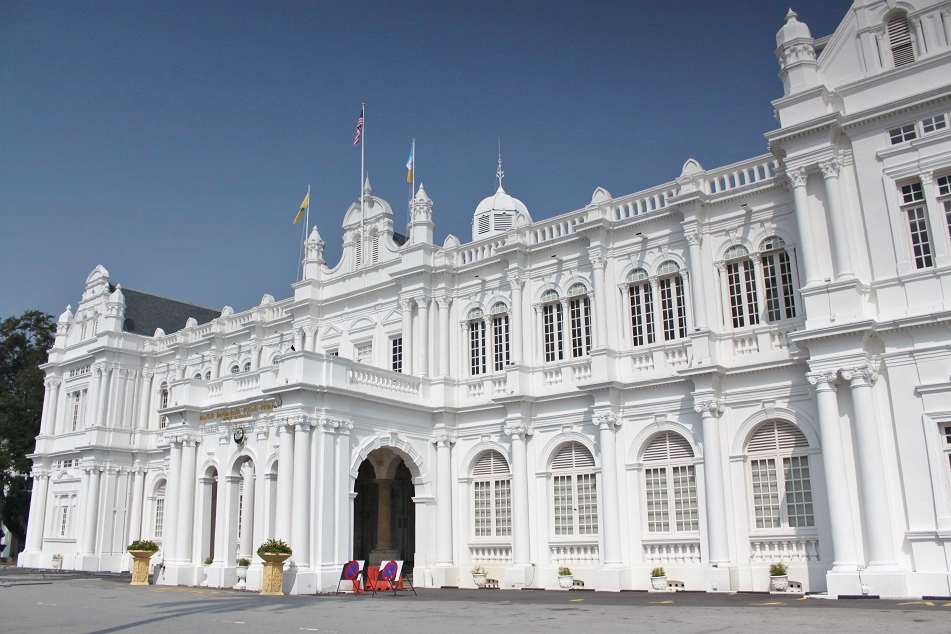
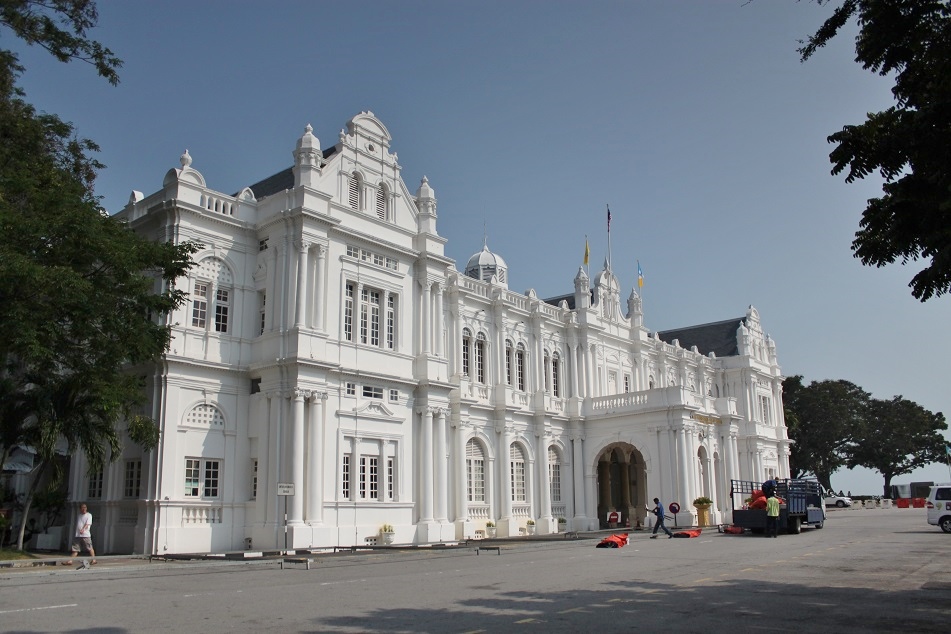


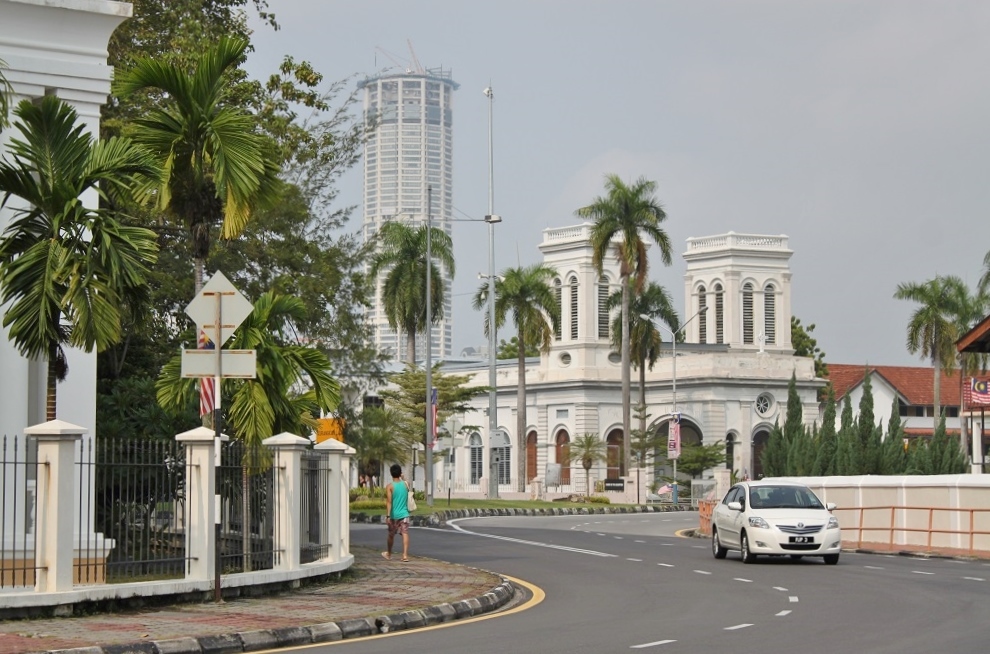
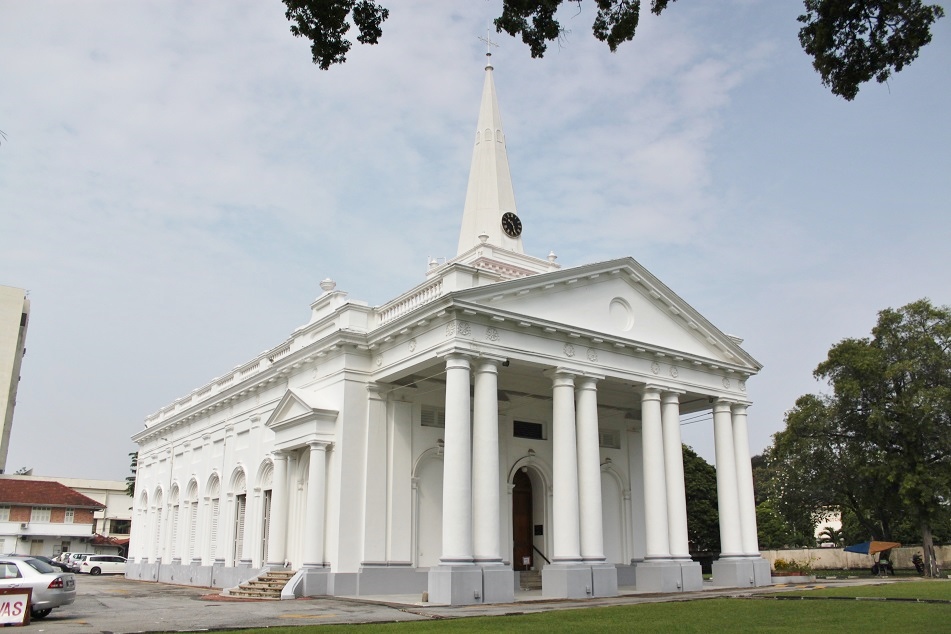
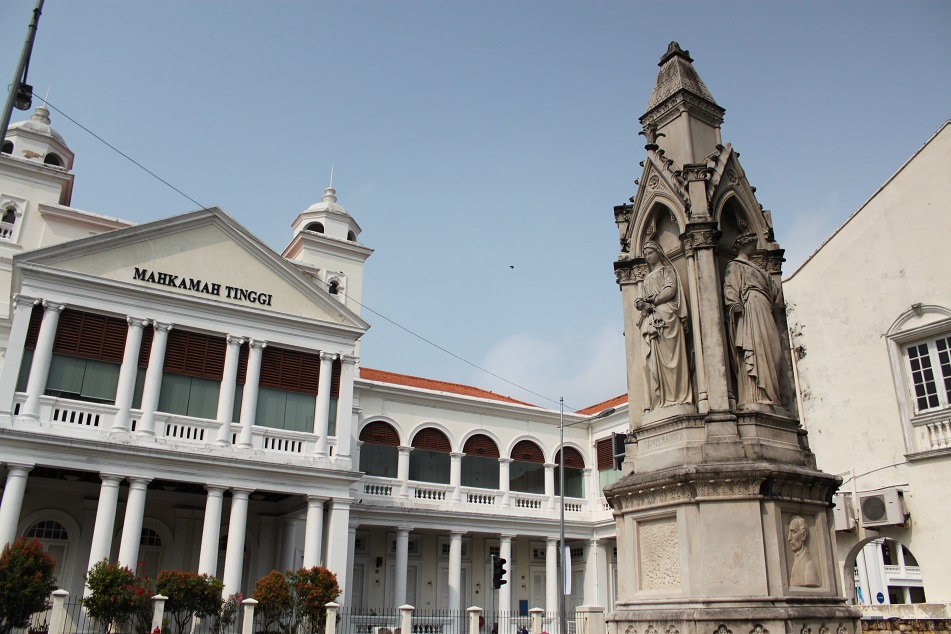

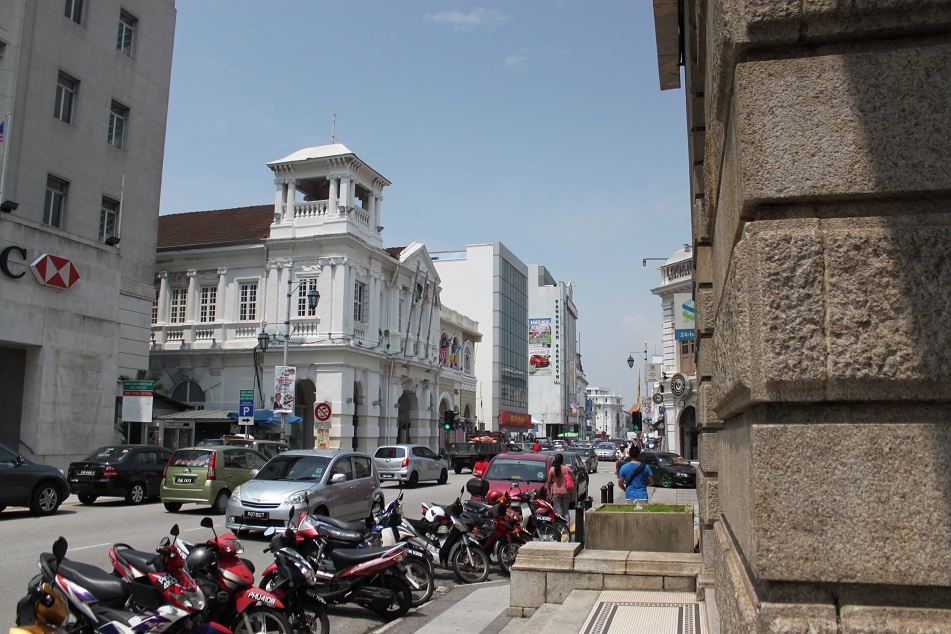
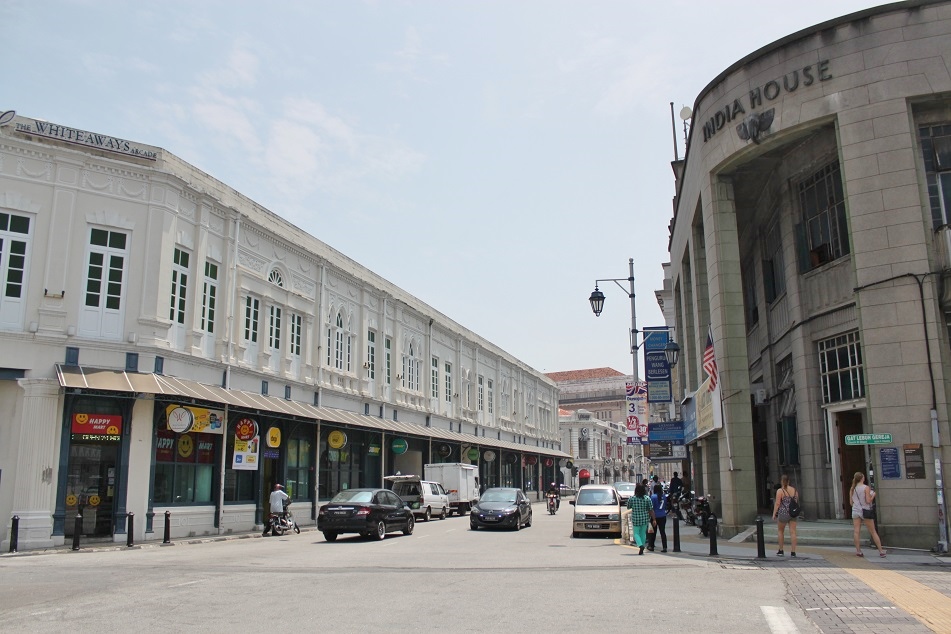
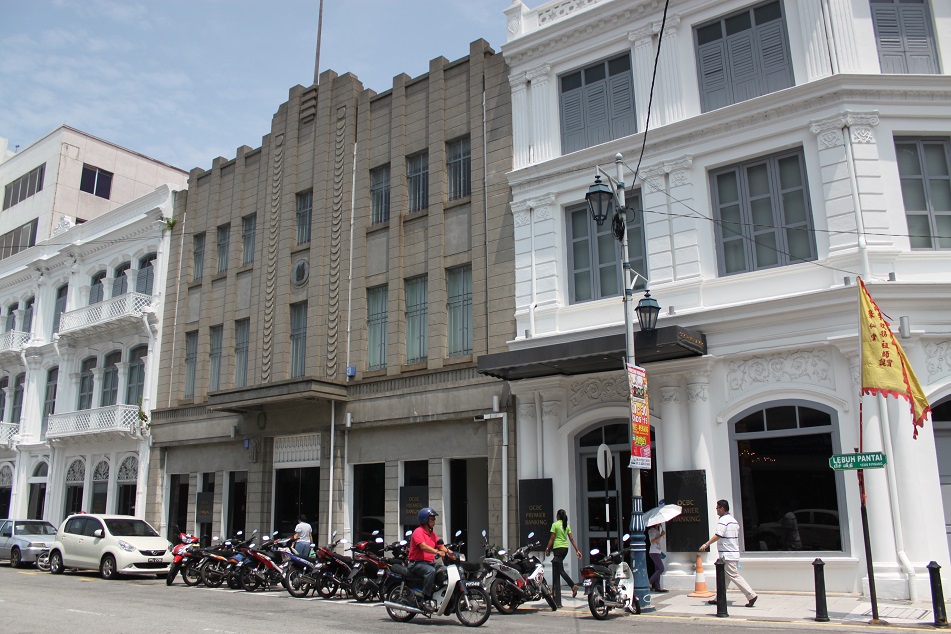


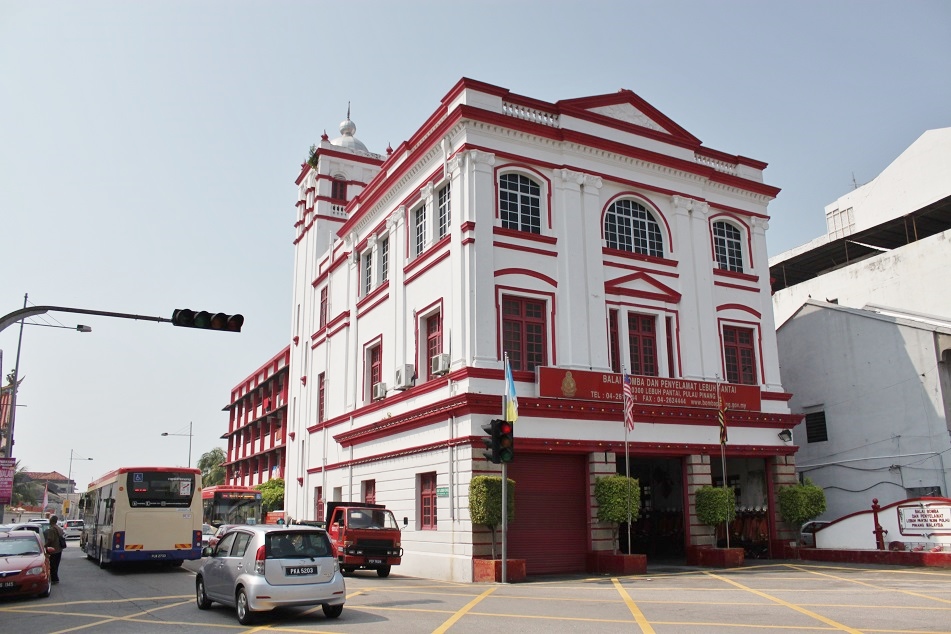
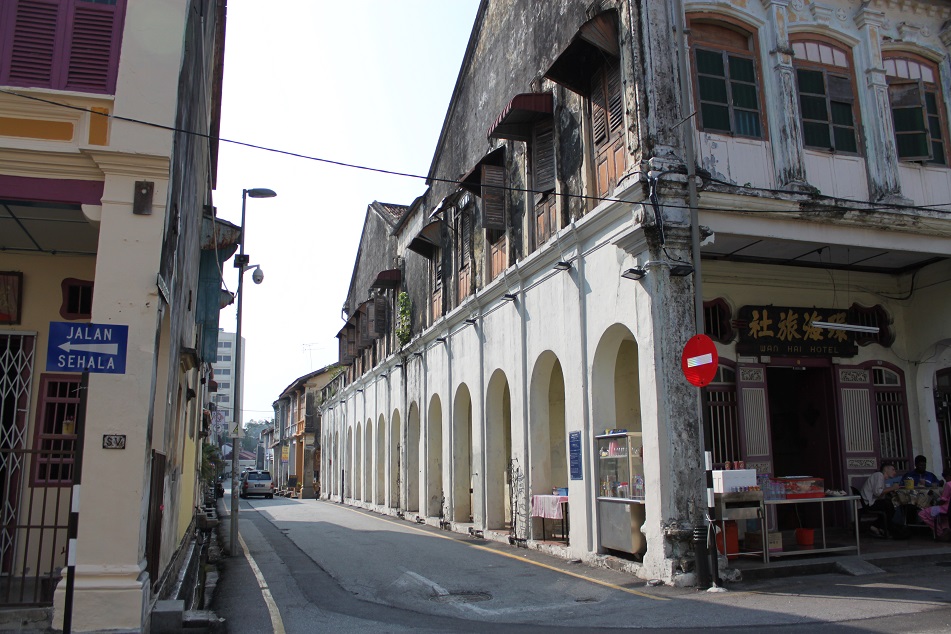
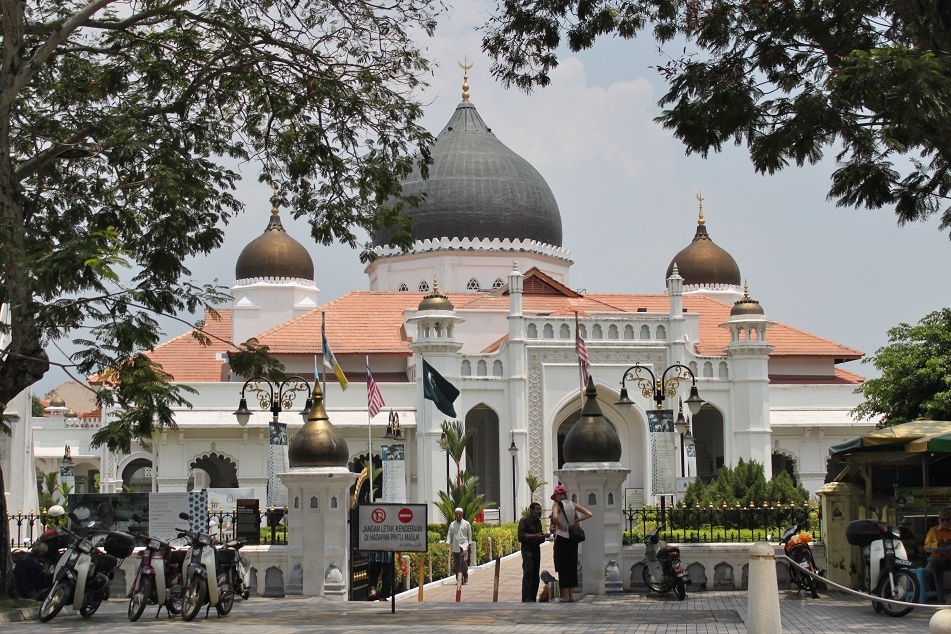



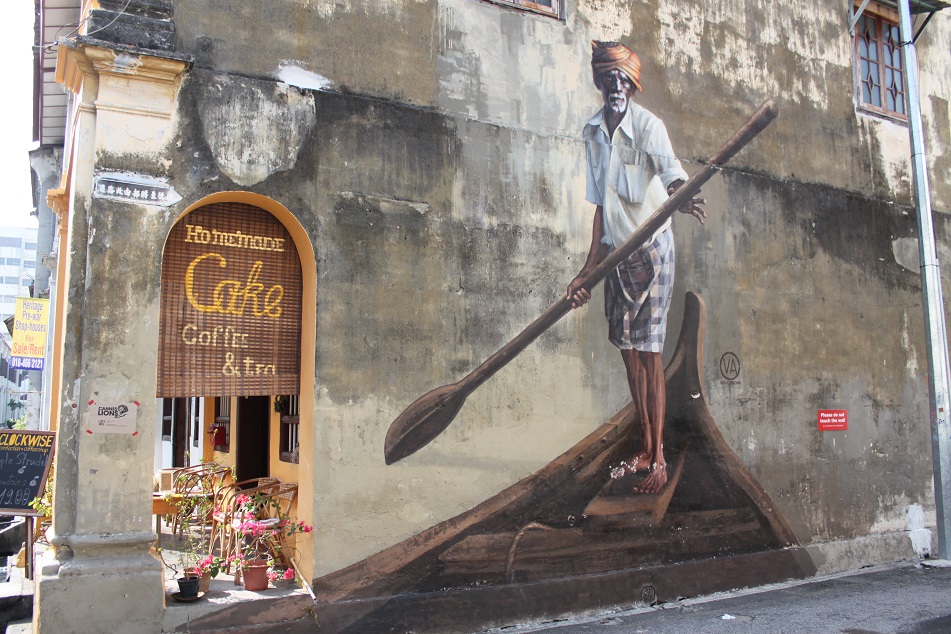

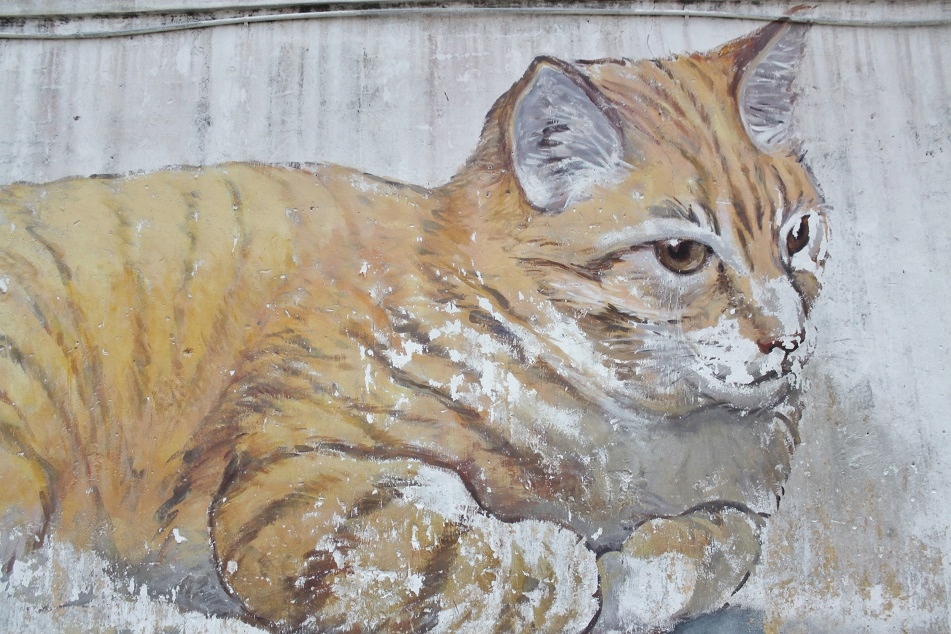
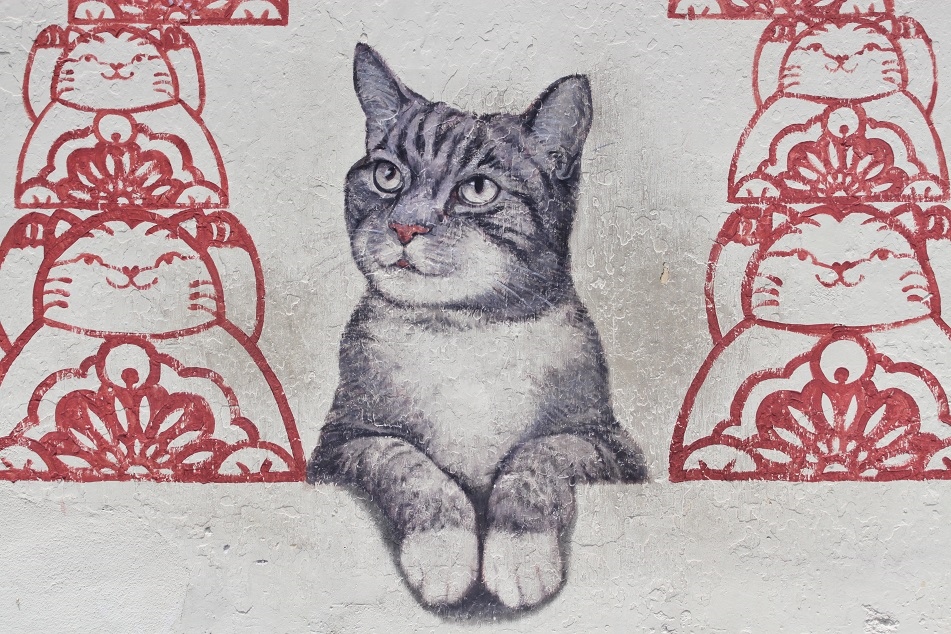

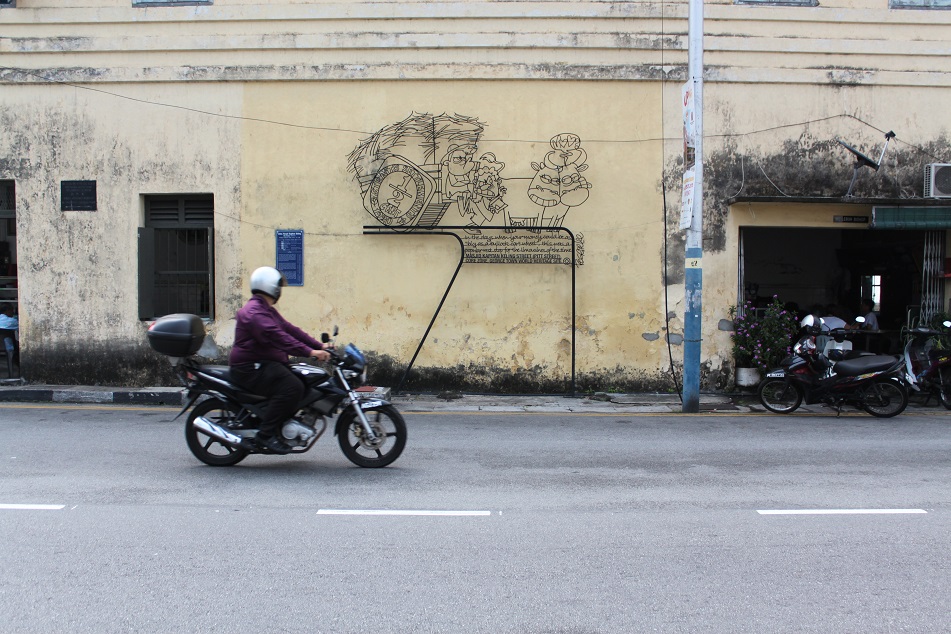
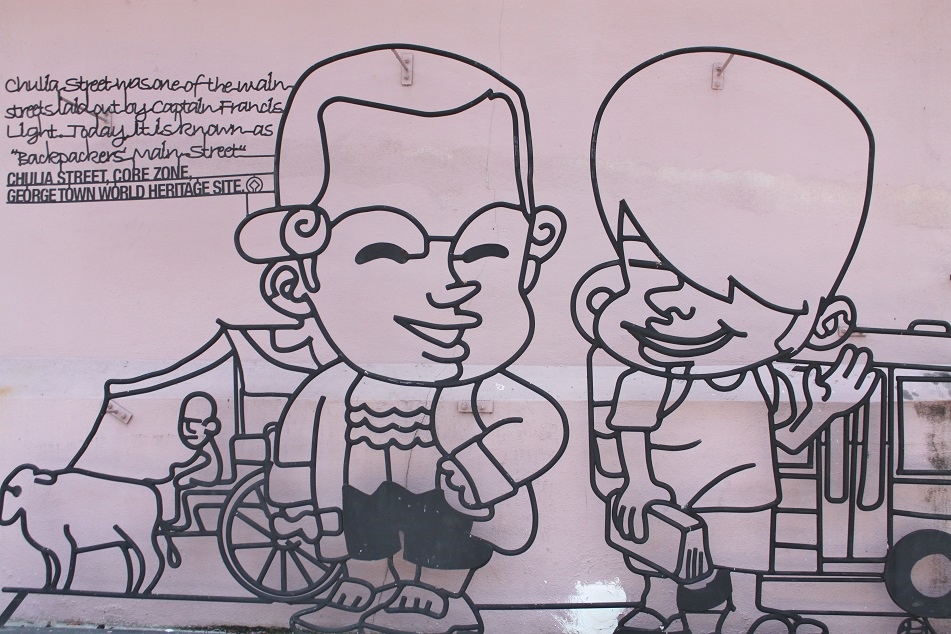

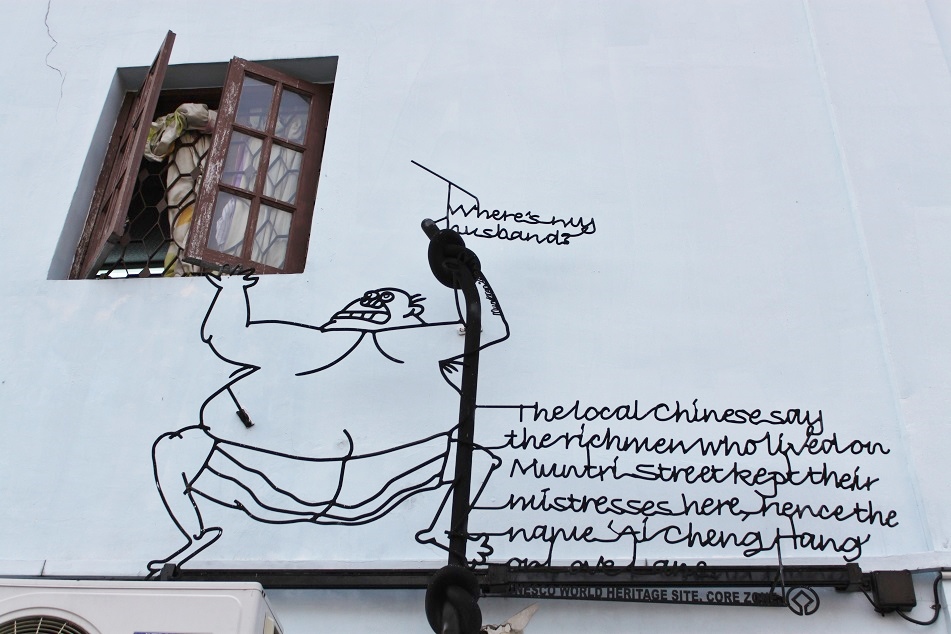
What an incredibly beautiful place with amazing photos and history to go with it!
LikeLiked by 1 person
Thanks Nicole! I have to split the stories on George Town into two posts, this and the one I’m going to publish some time next week. It was such an interesting place to explore and get lost.
LikeLiked by 1 person
Yes your posts have so much content! I bet they take a long time to write. They are incredible.
LikeLiked by 1 person
They do! Sometimes I wish I could write in just an hour or two. But it’s hard not to share about interesting facts of places I went to, and to do so I need to do a proper fact-checking. Thanks again, Nicole.
LikeLiked by 1 person
bangunannya bener bener masih asli, bersih..mengingatkan saya seperti di kota tua semarang
LikeLiked by 1 person
Mungkin lebih tepat kalau dibilang Kota Lama di Semarang akan terlihat seperti George Town kalau mayoritas bangunannya dirawat, bebas banjir, dan lingkungannya lebih tertata.
LikeLike
nah itu yang aku maksd mas, kmrn habis dari sana
LikeLike
Such a beautiful town! Great photographs.
LikeLiked by 1 person
It really was. Thanks for dropping by! I’m glad you enjoyed this post.
LikeLiked by 1 person
The city with its brilliant buildings look so clean and fresh as if they had just been built. Thank you for the visual treat!
LikeLike
The local government has been taking a really good care of George Town’s old buildings. Other cities in the region, including Indonesia, should learn from their Malaysian counterpart. The benefits of heritage building preservation are real. You’re welcome, Peter, and thanks for reading!
LikeLiked by 1 person
Thanks for the additional information, Bama!
LikeLiked by 1 person
Great post, Bama! Unfortunately, I never made it to George Town when I was living in Singapore. But in your photos, I’m struck by the architectural similarities between George Town and Singapore — both places have two and three story colonial style buildings (often in white) mixed in with shop houses, churches, mosques and Chinese temples. Such an eclectic mix always makes a place fun to explore. It was one of the aspects of Singapore I loved the most. Hopefully, I’ll get to George Town someday! I think I’d feel at home there.
LikeLiked by 1 person
Well, people say we tend to be attracted to places so far away, don’t we? 🙂 One day when you happen to be in this part of the world again, a few days in George Town would be nice, I believe. True about the comparison between George Town and Penang, but as Edwin points out in his comment, somehow Penang still retains that old world charm. It’s very encouraging to see what Singapore has been doing to its eclectic multicultural neighborhoods, as well as the old British buildings. More and more people finally understand that heritage building conservation serves a greater purpose than just making a city look pretty. Thanks for your comment, Kelly!
LikeLike
Nice pictures. I like the arts/drawings. 🙂
LikeLiked by 1 person
I really appreciate your comment, Nina. Those are some beautiful murals, aren’t they?
LikeLiked by 1 person
Yeah, they sure are! ☺
LikeLike
Great post, I love the murals.
LikeLiked by 1 person
So the local government made the right decision to commission artists to make George Town look prettier. Thanks for reading!
LikeLiked by 1 person
Nice post Bama. I was in Georgetown a couple of years ago and have a blog post on that. Being a Singaporean I do feel that Penang has preserved somewhat that old world charm that Singapore has lost in its march towards modernity.
LikeLiked by 1 person
Much appreciated, Edwin. I will look up your post tonight. I thought my friend and I were the only ones who felt that George Town was more charming that Singapore. Singapore had been focusing on development for a long time until at one point the government realized that preserving the old colonial buildings could actually bring benefits to the city. Since then things are looking pretty good.
LikeLike
Post after post, I marvel at the architecture of what was British India. The familiar style in an exotic, unfamiliar milieu captures my imagination every time!
LikeLiked by 1 person
In the upcoming weeks, I will write a post on Kolkata (Calcutta), the former capital of British India. I had only one day in the city but I made sure to visit one of the most magnificent buildings in all of British colonies in Asia, if not the world. Before that post, Yangon which is home to a lot of British colonial buildings thanks to Myanmar’s isolation from the world for decades.
LikeLiked by 1 person
Kemaren ga sempet baca tapi aku like dulu soalnya pasti fotonya bikin aku deg2an… *lhooo
Antara baca judul sama liat foto2nya pikiranku ga nyambung. Tau georgetown sih tp kok fotonya ga ada yg dikenal gitu sampai pikirku, mungkin mas Bama lagi jalan ke Georgetown yang di belahan dunia sana itu bukan yang di Penang…. tp hahaha itu beneran Penang. Ketauan deh waktu kesana mataku lagi siwerrr… jadi pengen mengulang… masih panas banget gak ya??? *takutitemwkwkwk
LikeLiked by 1 person
Minggu depan saya bakal posting tulisan kedua mengenai George Town sih mbak, tapi fokusnya ke kuil-kuil dan clan house komunitas perantau Cina di sana, mulai dari Hokkien, Hakka sampai Cantonese. Mungkin sisi itu yang Mbak Riyanti lebih inget mengenai Penang? Oh iya, foto-foto makanannya saya simpen buat Chapter 5 ya. Saya sampe nelen air liur bayangin nulis postingan di Chapter 5 nanti yang isinya makanan semua, hehe.. Pas saya ke Penang sih panas tapi gak sepanas Malaka. Jadi masih lebih enak buat eksplorasi sih.
LikeLiked by 1 person
Tulisan dan foto2 yang sangat baguuus! Terima kasih sudah menulisss
LikeLiked by 1 person
Sama-sama. Terima kasih banyak sudah menyempatkan baca postingan ini ya.
LikeLike
thanks for sharing the history of these beautiful buildings! I have gone passed these buildings in the numerous times that i have been to Penang but never knew what they were previously!
the next time i am there i would take more time to appreciate and admire them!
cheers from singapore,
everest
http://www.everestsays.com
LikeLiked by 1 person
I’m glad you enjoyed this post, Everest. Hopefully you’ll get the chance to return to Penang very soon so you can marvel at those colonial buildings again. Thanks for reading!
LikeLike
Mas Bama, you brought back my memories in Penang. Bangunan-bangunan di kawasan City Hall itu jugalah yang kutangkap dengan bidikan kamera ponsel dan kuabadikan dalam kepala. Pun dengan Masjid Kapitan Keling dan St. George’s Church.
Too bad I didn’t have much time in Penang. I didn’t had any culinary adventure at KOMTAR or Gurney Drive, and I missed Bukit Bendera, Batu Ferringhi Beach, or the Lorong Burma. Hope chance will bring me back to the pretty city. Nice shots, anyway 🙂
LikeLiked by 1 person
Itu artinya kamu memang harus balik lagi ke Penang, Nug. 🙂 Saya gak ke Batu Ferringhi maupun Gurney Drive sih, dan lebih banyak menghabiskan waktu di seputaran kota tuanya George Town aja. Pas suatu hari ceritanya mau cari makan siang dan datang ke satu tempat yang terkenal banget. Ternyata penuh, dan karena perut udah laper alhasil nyari tempat makan lain yang jauh lebih sepi. Eh pas makan, enak pake banget! Dan ternyata tempat itu pernah masuk CNN Go. Kadang emang harus berani nyobain di tempat-tempat yang keliatannya gak rame sih. Adakalanya tempat demikian justru makanannya lebih enak dibanding tempat yang jauh lebih populer. Thanks ya Nug udah menyempatkan baca. 🙂
LikeLike
Yes betul banget, mas Bama. Yang sepi bukan berarti nggak enak 😁
LikeLike
Your photos are always so clear and beautiful yet raw. I love seeing the city from your point of view!
LikeLiked by 1 person
Thanks for the wonderful comment! I like to do as little photo editing as I could. But when I have to, it’s usually to make the object in the photo look like how I saw it, not how my camera captured it, because our cameras have limitations.
LikeLiked by 1 person
Your effort definitely comes through in your photos. Keep posting!
LikeLiked by 1 person
That’s so kind of you. Thanks!
LikeLiked by 1 person
The street art is so vivid and this is certainly the first time I have ever seen wrought-iron street art. What amazing finds and thank you so much for sharing this with us. It will be one of the things I search for when I make it to George Town.
LikeLiked by 1 person
Prior to my visit to Penang, I had never seen any wrought-iron street art either. It was a clever move to commission the installations for they make history so much more interesting to learn. Penang is conveniently connected to major cities in the region. So next time you go to this part of the world, make sure to pay this island a visit. Thank you for reading!
LikeLiked by 1 person
Pingback: Penang and the Chinese Diaspora in Southeast Asia | What an Amazing World!
Singapore has preserved a lot of its colonial heritage, but as you alluded to in the post, there is something so wonderful and raw about the charm of Penang – the peeling, cracked walls on shophouses; the colorful murals; the unadulterated flavors of its street food (for instance, I’ve been told that fresh duck eggs are banned in Singapore); and much more besides. George Town is definitely a repeat destination for me!
LikeLike
I think when a place allows its raw side to be a little bit more exposed, it will suddenly feel a lot more interesting and appealing. No fresh duck eggs means no martabak telur in Singapore — I don’t think I can cope with that situation. I would love to go back to George Town too, and maybe next time the skies will be clearer.
LikeLiked by 1 person
Reblogged this on Penang Local and commented:
George Town’s Light and Shadow
LikeLike
I’ve stumbled on this blog post whilst reading your splendid Myanmar series… I never knew such a beautiful town existed in the Malaysian peninsula! I’m surely going to pay it a visit one of these days. Thanks for the great find!
LikeLike
Technically Penang — the island where George Town is located — is off the western coast of the peninsula, but it is part of Malaysia. It’s a great escape if you happen to be in Kuala Lumpur or anywhere else in the region. And don’t forget to sample some local dishes! Thanks for dropping by!
LikeLiked by 1 person
Pingback: 24 Hours in Penang: Place to Visit and Food to Try – A Plate for Two
Pingback: Kota Lama: Between Restoration and Reinvention | What an Amazing World!